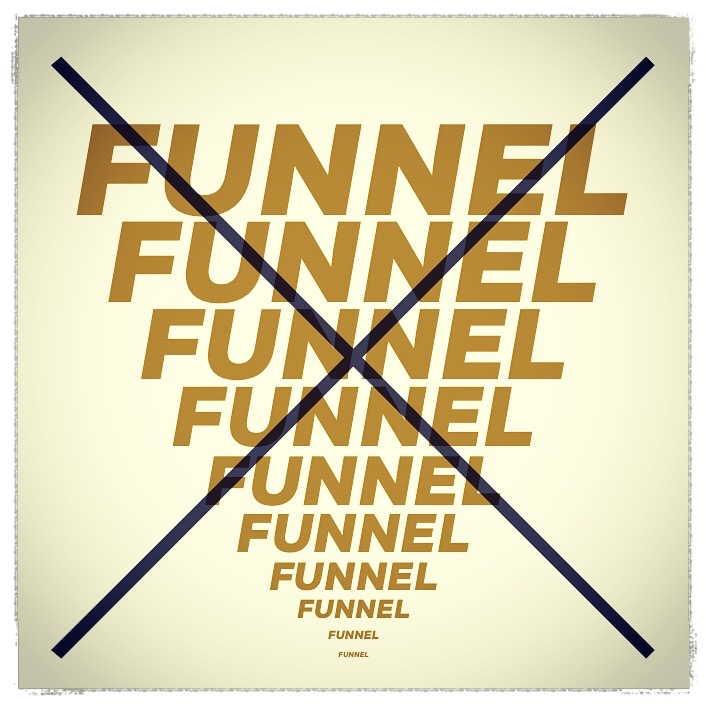The sales funnel is a tool that overviews the “buying process,” from first introduction to a product or service to an actual purchase.
The great thing about a sales funnel is that it’s trackable, which means it can shed light on where the buying process may be breaking down. It’s meant to track how many potential leads you get vs. how many of them become actual customers.
Each step of the funnel can be adjusted to try and move more people from the top of the funnel to the bottom where they actually make a purchase.
Beyond this, the sales funnel concept has some major flaws …
The Problem with Sales Funnels
The problem is, even though this is only a tool, a way of verbalizing a process of garnering business, it can easily have an effect on our thinking — and how we treat people.
For starters, the term “sales funnel” objectifies a living, breathing person into a thing that we must push through our funnel. It takes the humanity out of a customer, and manifests a process to increase revenue, as opposed to a process to help others solve problems.
Again, I know this is only a way to verbalize a process, but the words we use have power.
And the perception that’s created with a sales funnel is almost like transforming a person into an object — like a pinball — that needs to be pushed to a particular place to produce a sale.
When you look at each person you meet as a potential “sale,” you feed the sales funnel, but the thing is NOBODY likes to be sold.
The Relationship Funnel
Instead, let’s get rid of the word altogether and create a “Relationship Funnel.” Now, instead of trying to drive a person down to a sale, instead we work on developing relationships — one person at a time.
These relationships will inevitably fall into a handful of categories:
1) People who become friends or colleagues
2) People who we learn from , or learn from us
3) People who become clients or customers
4) People you just don’t ever want to talk to ever again — for whatever reason
The people who become customers don’t become customers because we’ve “sold” them. They become customers because through relationship development we’ve learned what their problems are and they’ve learned that we can help solve them.
Take the classic networking event as an example.
With the sales funnel mentality, a person might have a goal to attain three “hot leads,” or good candidates for their sales funnel. We’re objectifying here. This is superficial, and also very egotistical — making it all about you and growing your business.
I like to call this the “hungry wolf syndrome.” Essentially, someone who walks into a room looking for a meal (sale).
With the relationship funnel, we enter that same room with a very different mindset. We’re taking every interaction as an opportunity to develop a relationship and see where it goes. And IF someone is a good fit to become a customer, our job is to see if we can help solve their problems and pain points — not push them through a funnel so we can get paid.
Now, instead of asking ourselves how many hot leads e’re going to get, we’re asking ourselves “what relationships will I develop today?”
Don’t get me wrong, many businesses are truly looking to add value to each customer and truly help. But when we use words that imply a different directive, it drives our actions in a different way.
In the words of Muhammad Ali, “what you are thinking about is what you are becoming.” I don’t know about you, but I don’t want to be a guy who sells stuff and pushes people into a funnel (that’s no fun). I prefer to look at each interaction as an opportunity to build a relationship. I’ve seen first hand how this philosophy can help build a successful business, while being perceived as an authentic professional.
And with the content marketing philosiphy solidly in place — both online and in the physical world — the more we align ourselves with relationship building, and shed the old sales funnel philosophy, the better off we’ll be.
